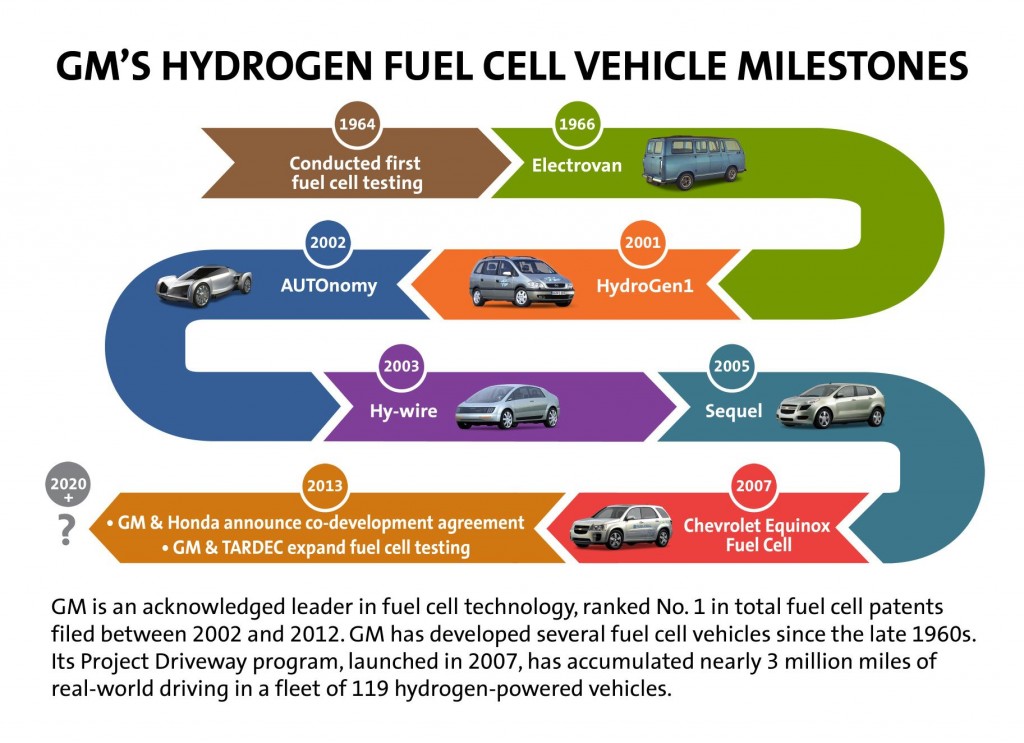WARREN, Mich. – General Motors and the U.S. Army Tank Automotive Research, Development & Engineering Center are expanding their collaboration in the development of hydrogen fuel cell technology.
Through a new Cooperative Research and Development Agreement, GM and TARDEC will jointly test new hydrogen fuel cell-related materials and designs to evaluate their performance and durability before assembling them into full scale fuel cell propulsion systems.
This collaborative effort will enable GM and TARDEC to jointly develop technology that meets both of their requirements, accomplishing more tangible results than either entity could achieve on its own. The project is expected to continue for up to five years.
“GM welcomes the opportunity to further expand our work with TARDEC developing fuel cell technology,” said Charlie Freese, executive director of GM’s global fuel cell engineering activities. “We believe hydrogen fuel cell technology holds tremendous potential to one day help reduce our dependence on petroleum and we are committed to building on our leadership through the continued development.”
This is the second fuel cell-related announcement GM has made this year. In July, GM and Honda announced a long-term, definitive master agreement to co-develop a next-generation fuel cell system and hydrogen storage technologies, aiming for the 2020 time frame.
GM is an acknowledged leader in fuel cell technology. According to Clean Energy Patent Growth Index GM ranked No. 1 in total fuel cell patents filed between 2002 and 2012. GM’s Project Driveway program, launched in 2007, has accumulated nearly 3 million miles of real-world driving in a fleet of 119 hydrogen-powered vehicles, more than any other automaker.
GM is currently building a new Fuel Cell Development Laboratory in Pontiac, Mich., where the majority of the company’s fuel cell development work will take place.
TARDEC and GM’s respective fuel cell laboratories are about 20 miles apart, which greatly promotes daily collaboration, and GM and TARDEC engineers are developing extensive plans to share physical material and data between the locations.
TARDEC opened a new Fuel Cell Research Laboratory located in the recently opened Ground System Power and Energy Laboratory building in Warren, Mich. The state-of-the-art facility enables TARDEC to test and integrate the fuel cell systems it has been developing for military applications for more than a decade.
“The Army continues to investigate technologies and partnerships that give the United States a decisive advantage,” said TARDEC Director Paul Rogers. “Our relationships – like this one with GM – are maturing and accelerating technologies critical to the transportation and energy capabilities of the future.”
Additionally, TARDEC is evaluating GM fuel cell vehicles in a comprehensive demonstration in Hawaii The technology has possible military applications ranging from ground vehicles to mobile generators.
Fuel cell technology helps address the two major challenges with automobiles today – petroleum use and carbon dioxide emissions. Fuel cell vehicles can operate on renewable hydrogen that can be made from sources like wind and biomass. The only emission from fuel cell vehicles is water vapor.

About TARDEC
Headquartered at the U.S. Army Detroit Arsenal in Warren, Mich., TARDEC is a major research, development and engineering center for the Army Materiel Command’s Research, Development and Engineering Command and an enterprise partner in the TACOM Life Cycle Management Command. TARDEC is the Nation’s laboratory for advanced military automotive technology and serves as the Ground Systems Integrator for all Defense Department manned and unmanned ground vehicle systems. With roots dating back to the World War II era, TARDEC develops and integrates the right technology solutions to improve current force effectiveness and provides superior capabilities for future force integration. More information can be found at http://tardec.army.mil
